J.K. Rowling's great work is laced with esoteric symbolism. I aim to make this apparent through the focus on the visual examples. As always this is the expression of my observations and impressions. I am just as interested in what you perceive (unless you are only denying what I'm presenting with no deeper analysis than that. I find that to be highly boring and a waste of everybody's time). I will most likely just ignore anyone who states that there is no esoteric symbolism in the Harry Potter books. In fact, each and every American edition has the occult, initiatory symbolism of the saga plainly presented.

The title pages of every Harry Potter book that I have seen (meaning American editions) feature the checkerboard, initiatory pattern fundamental to esoteric symbolism. This grid is found in this format, with an illustration, preceding the table of contents, and then again, without illustration, following the table of contents, directly before the first chapter. A grid is also found embossed on the hard covers beneath the dust jackets of every one of the American editions of the books, 1-7. Seemingly emphasizing the importance of this pattern, the grid is also found along the bindings of the paperback releases. The hardcover version of The Philosopher's Stone (yes, I realize I'm speaking about the American variant, however, I refuse to accommodate the silliness, or whatever, of not calling a Philosopher's Stone a Philosopher's Stone) even incorporates the pattern along the bottom of the cover illustration, where it at least in part represents a tiled floor of Hogwarts.
With a very easy to find key suspended above the pattern on the back cover. Is this a key from the story? No, not really, because the important key from this story had wings, didn't it? Yes. And Mary GrandPré is really pretty faithful in her depictions to what Rowling has written, as far as I can tell, so we might very well wonder if this key holds a different, fully symbolic intention, namely indicating at the onset that the initiation grid is key to the symbolism of the Harry Potter saga. I find it interesting that this anomalous key is positioned so close to a message bearing owl. Rowling's wonderful Owls economically represent witchcraft, the occult (meaning the occluded or hidden), wisdom and the highly important Language of the Birds, the last especially emphasized through the owls' role as primary means of message delivery in the Harry Potter universe.
The occult symbolism of this particular cover is almost overwhelming. Harry flies between twin columns, again not a depiction of a story element. Columns, especially paired columns, are another of those fundamentally important occult symbol motifs, extending back at least to the columns Joachin and Boaz from Solomon's Temple. The columns support an arched, arcade-like structure. An arch placed above a figure is a design element found in architecture and illustration as a means of designating importance, extending back to antiquity, so it is no surprise to find Harry featured in this manner here nor Dumbledore on the back cover. Harry's position between the columns seems to correspond to the High Priestess Trump of the Tarot Major Arcana. Here, the darkness and lightness of the two columns are presented using story elements positioned strategically. The light side by the goddess indicating unicorn on Harry's right, and the dark side by the Cerberus (Fluffy) on his left. As if to emphasize this detail, the columns, and the entire composition, are lit from the viewer's left. Judging strictly from this image, we might also note that the Cerberus seems to identify Hogwarts as the Underworld, but don't be alarmed. Stripped of dramatics, the Underworld is a form of the Otherworld, and certainly Hogwarts represents that essential fantasy model.
It seems the overwhelming message of the cover illustration, and this first portion of the story of Harry Potter, is initiation, symbolized through a pattern of dichotomy (the grid, the columns, etc.). On a story-level Harry Potter readily demonstrates the role of wisdom initiate as well. He is both an orphan and a Widow's Son (as his father was murdered first by Voldemort), who despite his wizarding heritage enters the magical world completely unaware of his true nature, a tabula rasa. This fundamental characteristic then might explain the unusual detail of Harry's glasses on this cover, one lens red and the other blue. Like 3-D glasses, a very modern symbolic device, but one that can easily read as a figure seeing into higher dimensions.
The use of the lenses to differentiate one eye from the other also associates Harry Potter again to the Egyptian deity Horus, associated with the sun and the symbol of the All-Seeing Eye. Another clear testimony of Harry's nature as a solar allegory is found both in the story and on the cover of the first novel of his adventures. Harry is shown flying through the twin columns engaged in a game of Quidditch. As the Gryffindor team's Seeker, Harry's job is to search out and capture the Golden Snitch, a small, magical ball with wings. Clearly this is an adaptation of the ancient Egyptian Winged Sun Disk, another symbol of Horus, the Widow's Son.

If I recall correctly, Harry manages to catch the Snitch in every game of Quidditch he participates in. The Snitch that Harry catches in Book One is bequeathed to him in Book Seven by Dumbledore. Hidden inside it Harry finds the Resurrection Stone, the one item that was both a Horcrux and one of the Deathly Hallows. Keeping in mind the Egyptian mythos context and the central importance of resurrection in that belief system, this is a very interesting detail. Not surprisingly, this solar symbolism is also present on the cover of the special anniversary printing of the novel.
Harry looks into the Mirror of Erised, where his reflection is flanked by golden, solar emblems. In other words, Harry Potter is the Sun (in a moment focusing on him being James and Lily Potter's Son). Note the foreshadowing presence of the leering skull next to the subtle All-Seeing Eye.
The version of the novel that I own is the trade paperback, so the back cover that I am used to seeing is this one:
Which is actually a cropped image from the inner fold of the dust jacket. Truncated it appears to be a seated figure, but the full art clearly shows a tip-toeing individual lighting their way by candle. Certainly then this is meant to represent Harry himself, veiled by his Invisibility Cloak, searching for information about the real life 14th century alchemist Nicolas Flamel. This key piece of information gets lost with the bottom of the image sliced off, however, the key symbolic meaning remains intact as the candle of Illumination pokes out behind a curtain or veil.
Alchemy is the over-riding concept of Book One of the Harry Potter saga, and this is clearly stated and presented through the use of Flamel and the Philosopher's Stone. This fully corresponds to the solar allegory and initiation symbolism already mentioned. All of these symbolic systems are interrelated. Key character Albus Dumbledore, who mirrors Harry Potter on the back cover, is praised throughout the series for his work as an alchemist through examples such as his discovery of the twelve uses of dragon's blood, and his work with the aforementioned Nicholas Flamel. Note that Dumbledore is introduced utilizing a magical device of his own invention, the Deluminator, an easy enough to read metaphor for veiling or occluding information, but a device that is just as much a Reluminator, especially as it functions for Ron Weasley in The Deathly Hallows. The point of the device may very well be that in certain circumstances obscuring information is the best means of illuminating it. Compare this metaphor with the concept of a candle held by an individual wearing a cloak of invisibility, something hidden supporting the means to see, and searching for the obscure but real-world figure Nicholas Flamel. Food for thought.
Now let's take a look at Mary GrandPré's chapter art for Harry Potter and the Philosopher's Stone. There are seventeen chapters altogether.

This title page image of Hogwarts was seen above on the checkerboard title page example. Not only does this introductory image invite and lead the viewer/reader into the magical Otherworld of the Harry Potter series, it also features a very clever (or accidental) solar symbol, a Circumpunct, here standing in for a clock tower. This circled dot is a symbol of the sun from both the ancient Egyptian and Chinese systems, and a symbol for Gold in alchemy and numerous other interesting meanings as you will see if you follow the link to the Wikipedia article. It is also the All-Seeing Eye again in its simplest presentation.
Chapter One: The Boy Who Lived
Chapter One of Harry Potter and the Philosopher's Stone opens with an image of the infant Harry Potter sleeping innocently under a field of stars, as he was left for his aunt and uncle by Dumbledore following the murder of his parents and the backlash of the killing curse that destroyed Voldemort's corporeal form. You can just make out the lightning bolt scar which Mary GrandPré always places in the center of Harry's forehead. In the films the scar is located over Harry's right eye. Rowling never explicitly states where the scar is positioned in her writing, and both locations bear symbolic interest. The film variation again draws emphasis to a single eye, continuing the Horus association. GrandPré's placement is over the pineal gland/third-eye. Also note the nine stars that shine above Harry in this image, six of which form a larger pentagram.
Chapter Two: The Vanishing Glass

Chapter Two's illustration features Dudley Dursley, the anti-Harry, with some of his many birthday gifts. The chapter's title refers to Harry's accidental use of magic to remove the glass containing a boa constrictor at the zoo. This is Harry's "Through the Looking Glass" moment as he discovers he can communicate with snakes (as a parseltongue, a rare talent he absorbed from Voldemort). Everyone is of course familiar with the sinister symbolism of snakes and serpents, particularly as presented in Genesis, and this is certainly an element utilized throughout all seven books by Rowling through the association of snakes with Voldemort and Salazar Slytherin. And certainly there is interest in the role of a snake as initiator of ten-year-old Harry Potter into the world of magic, however, the symbolism of serpents are far more complex than simply representing evil, and it seems Rowling communicates this ambiguous nature through Harry and Voldemort's shared affinities with the creatures.
In fact snake symbolism is so complex one might possibly write all-day and not exhaust the subject, so I'll try to keep it brief and focus on the salient points. Having mentioned the positioning of Harry's (Voldemort-connecting) scar over his third eye in the GrandPré art, the serpent is used as a symbol in Yoga to represent the Kundalini, energy coiled around the base of the spine that rises and emerges through the forehead chakra of enlightened individuals. Note that Harry here releases the captured serpent. In numerous systems the snake represents rejuvenation/reincarnation through the shedding of its skin. The ancient Egyptians told the tale of the massive serpent Apep who threatened to capsize the solar barge of the sun god Ra. Even within the Christian context the serpent holds ambiguous symbolism. Certainly it represents Satan/Samael, but it also stands for St. John the Evangelist (in part as one of the symbols of the constellation Scorpio). More than representing evil, the serpent stands for the balance of opposed forces, as in the case of the alchemical Ouroboros or twined around the staff of Mercury as his Caduceus.
Mary GrandPré presents an image of the deluge of Hogwarts admittance letters that are delivered to Harry just preceding his 11th birthday (July 31st, shared with J.K. Rowling). These important letters naturally rush through the arched opening of the fireplace. This is the first but far from the last example of fire and fireplaces serving as a format for magical communication and transport, but we'll talk about that in greater detail in later articles in this series. The overwhelming purpose of this chapter is demonstrating the extreme ends Vernon and Petunia Dursley will go to to deny Harry's heritage and inner nature, jealous and fearful of what they can not understand, and how this is ultimately an exercise in futility.
Chapter Four: The Keeper of the Keys
This illustration visually introduces Rubeus Hagrid, the half-giant keeper of keys and grounds at Hogwarts. An umbrella can serve as a symbol for the vault of the heavens. This seems particularly so in the hands of a penitent giant. Together with the umbrella, I can't help but think of the titan Atlas. That the umbrella is pink continues this novel's focus on alchemical symbolism, the insertion of feminizing detail on an otherwise obviously masculine character. In A Dictionary of Symbols J.E. Cirlot describes the Umbrella as a solar emblem and a father symbol due to the phallic nature of its mechanism and its protective qualities. Hagrid is one of several surrogate fathers for Harry Potter. Note that the owl shown sitting on Hagrid's shoulder is not featured in the text. Rather this seems a purely symbolic choice by GrandPré, designating Hagrid as wisdom-bearing, an occult initiate and a speaker of the Language of the Birds.
Chapter Five: Diagon Alley
In chapter five Harry visits London's magical shopping district Diagon Alley for the first time to purchase his school supplies, including his wand from Mr. Ollivander. The wand testing is what is depicted for the chapter art. Harry's wand has a phoenix feather as its core, the twin of which empowers the wand of Voldemort. As the Phoenix comes up later in a more prominent manner I'll wait until then to discuss its symbolism. The wood Harry's wand is made of is Holly. Holly symbolizes truth. Its color led to its often being used to craft the white pieces of chess sets, so we can see the dichotomy/opposition feature of the Harry Potter story at play even at this level. Cirlot ascribes the magical powers attributed to wands as deriving from the concept of every stick or wand being a straight line, "embodying implications of direction and intensity." Jesus was depicted as wielding a wand when performing miracles in the early Christian era, as is the case of this 4th century fresco from Rome's Via Latina catacombs, showing Christ raising Lazarus from the dead.
Chapter Six: The Journey From Platform Nine and Three-Quarters
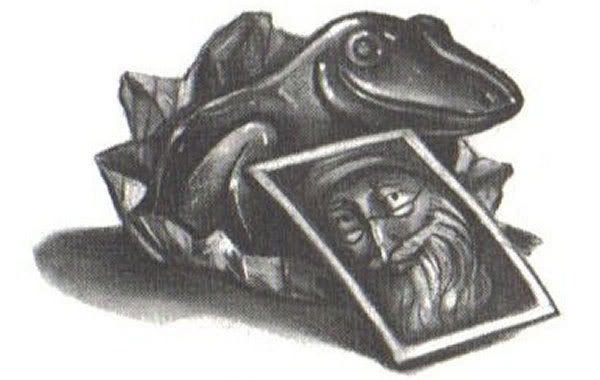
I can't help but read this image of the Albus Dumbledore trading card Harry receives with his Chocolate Frog as alchemical symbolism, particularly because it ultimately proves to be the key to the children discovering the identity of Nicholas Flamel. The symbolism of the Frog and the Toad are naturally related, though Cirlot considers them to be the inverse of one another, representing the same concepts with the Frog positive and the Toad negative. Of the Frog, Cirlot states it represents transition from the element of earth to water. Noteworthy here is what Hans Biedermann describes as the traditional use of a Toad as an alchemical symbol representing the primal matter that is transformed into the Philosopher's Stone. If it seems a stretch to you to interrelate the symbolism of a chocolate frog to the alchemical toad at this moment, then note that this chapter introduces Neville Longbottom and his pet toad Trevor. This chapter, describing Harry's first journey by train to Hogwarts, also introduces Ron and the rest of the Weasley family and Hermione Granger. Rowling took the name Hermione from a character in Shakespeare's A Winter's Tale. Hermione is also a name from Greek mythology, one of the daughters of Helen of Troy. It is no small detail that, quite apparently, the name Hermione is derived from that of the Greek wisdom deity Hermes, correspondent with Mercury, Thoth, Nabu, Odin, etc.
Chapter Seven: The Sorting Hat

As we should expect, Chapter Seven of Harry Potter and the Philosopher's Stone is of key importance, featuring Harry and his fellow first year students literal initiation into Hogwarts and their sorting into the various houses. I find it odd that the chosen illustration for this chapter is Peeves the Poltergeist bearing a collection of walking sticks he throws at the Gryffindors as they pass. The sticks naturally hold some similarities to the symbolism of wands, but more so to Crutches, which obviously denote a state of impairment or incompletion. Cirlot interestingly ascribes Ghost symbolism as relating to "psychic dissociation." The trouble-making Peeves very much personifies distraction and disruption. His image here too might be said to be a misdirection from the more significantly charged activity taking place in Chapter Seven.
It is the sorting that is key here, a process guided by Minerva McGonagall, named for a Mother Goddess and an embodiment of wisdom associated with Athena, and enacted by the wondrous Sorting Hat, which examines each students' inner nature and places them in their appropriate House. How great that Biedermann describes Hats as representative of their wearer. Jung associated the Hat with thought, and indeed, the Sorting Hat is sentient as well as being capable of reading the thoughts of the individual it sits upon. Jung furthers that the hat is, "the summit of an individual" thus representing that character's central concept.
The four houses of Hogwarts are a complex of interactive symbolism. They are essentially elemental, continuing the alchemical basis of the Harry Potter universe. Gryffindor is represented by the colors red and gold, and its emblem is the Lion, easy enough to read as representing Fire. Hufflepuff is Earth, represented by the Badger and the colors yellow and black. Ravenclaw's animal is actually the Eagle, and its colors are blue and bronze. It stands for Air. Slytherin is the Water. Its colors are green and silver and it is represented by the Serpent. Snake symbolism was previously discussed. In this context it continues to slant towards the negative connotations, though it is notable as the story progresses how the nature of Slytherin, like the Snake, like Water, is ambiguous, seen for example in the actions of key character and Slytherin house head Severus Snape, the Potions Master (again, Water). The key personality trait of Slytherin is cunning, which all readers of these novels already know, but which I mention to emphasize that a clever author might use a fictional character's inner nature to represent a concept or material just as readily as the reverse.
Like the Snake (and the Lion), the Eagle represents a vast complex of symbolic associations. It is well-known as a solar emblem in many cultures, and also frequently associated with Sky Gods like Zeus/Jupiter. Biedermann describes the psychological connotation of the Eagle representing the "heavens of the mind," and thus finds it natural that the Eagle came to stand for St. John as the evangelist "most firmly established in the intellectual realm." Cirlot ascribes the Eagle to representing "the spiritual principle." At the time of Harry Potter's attendance of Hogwarts the Ravenclaw head was Filius Flitwick, the Charms professor. Charms refers to spells that affect the behavior of an object, and this can be seen as related to the actions of wind or air. Ravenclaws are meant to exemplify the powers of the intellect.
Of the four symbolic animals, Badgers have the least available material regarding their symbolism. Biedermann associates them with vice and avarice, which seems unfair, and mentions they are considered sly like foxes in Germanic lore. Badgering of course refers to incessantly pestering someone. There is also a connotation of healing associated with Badgers due to the folk use of badger fat in medicine as far back as antiquity. As a subterranean animal it is easy to see the association with the earth. The Hufflepuff head is Pomona Sprout, the Herbology professor, about as earthy a subject as there could be. The primary traits of the Hufflepuffs are patience and work-ethic.
The Lion is well known as a solar symbol, and further corresponds to Gold. Cirlot associates it with "philosophical fire," which refers to the radical transformation of cognition. According to Biedermann, in alchemy the Lion at times represents sulfur, while a Red Lion stands for the finished Philosopher's Stone. Fire is of course transformative, so naturally Gryffindor head McGonagall oversees the teaching of Transfiguration. The overriding attribute of the Gryffindors is bravery. Recall that Harry (and Rowling) was born on July 31st, making him a Leo.
Chapter Eight: The Potions Master
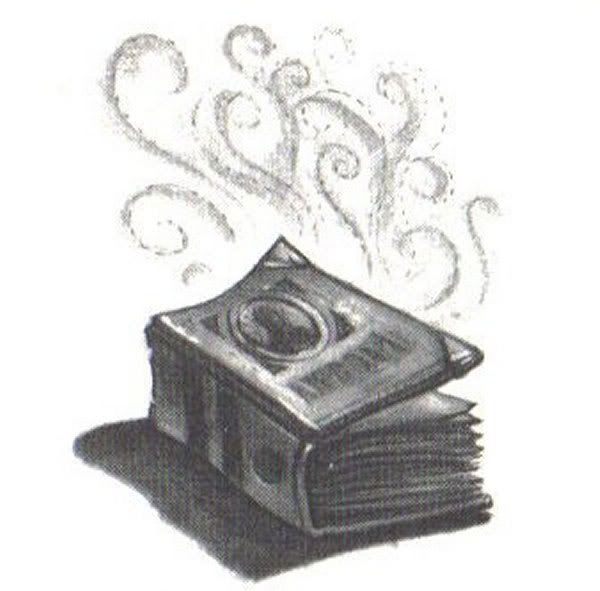
Chapter Eight primarily details Harry's first week of classes at Hogwarts, and this is symbolized by GranPré through this image of a magical text. No specific text book of any significance is made mention of in the chapter. However, the image of a book seems appropriate as Biedermann calls the Book "the container of revealed wisdom," while Cirlot describes it as "an allegory of the esoteric and exoteric." Note that the volume in the drawing appears to bear a portrait on its cover, a shadowy figure within a mandorla, in a pattern that is essentially Tetramorphic, that is, a visual depiction of the five elements, Earth, Air, Fire, Water and Ether.
Chapter Nine: The Midnight Duel
As an art historian with an interest in hidden symbolism I am taken by the concept and image of something hidden behind a painting, especially so an artwork that is sentient. This is a truly inspired means of denoting esoteric symbolism. Here we see Harry and Ron sneaking out of the Gryffindor tower in order to meet Draco Malfoy for a midnight duel. Hermione and Neville end up tagging along. Malfoy doesn't show, but the Gryffindor students have their first encounter with Fluffy the Cerberus. The other important event of this chapter is Harry and company's first flying lesson (more on Flying momentarily) and his subsequent placement on the Gryffindor Quidditch team as Seeker, discussed towards the start of this article.
Chapter Ten: Hallowe'en
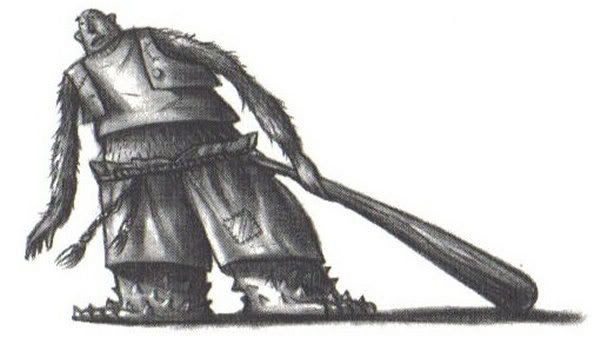
On Halloween Professor Flitwick teaches his first year students how to make inanimate objects fly using the Wingardium Leviosa incantation. Why is this interesting? As Cirlot describes it, Flying is "closely connected with the symbolism of level," and the entire Harry Potter saga is about initiation into a process of transcendence, rising up through levels. This of course is even more pertinent to the previous chapter and the personal flight of the students, but there is something about the timing of this lesson that intrigues me. Perhaps it is because Halloween night is also when Harry, Ron and Hermione encounter the Troll. In fact, it is Ron's teasing of Hermione's ability to make objects fly that leads to this dangerous encounter. So it is the symbolism of Flight in interaction with that of the Troll (the same thing in this case as an Ogre). Cirlot attributes the origins of the Ogre as deriving from the legend of Saturn devouring his children, an allegory of the cycle of creation and destruction in time. The Ogre or Troll is a monster that eats children, and this is always a Saturnian reference. The Ogre/Troll is further a specific example of the more general symbol of Monster which Cirlot describes as being symbols of "the base powers which constitute the deepest strata of spiritual geology." So what we have here is a character's ability to transcend being ridiculed, leading to a deadly encounter with an emblem of humanity at its most base level. I very much enjoy Mary GrandPré's troll illustration, particularly the monkey arms, which furthers this analysis by depicting the troll with "primitive" features.
Chapter Eleven: Quidditch
Chapter Eleven features Harry's first Quidditch match. The speeding spheres of the chapter art looks astronomical to me, particularly with the winged, golden Snitch that I believe represents the sun. You might recall that during this match Harry's broomstick is jinxed and Hermione and Ron mistakingly believe that it is Snape doing so. Hermione disrupts the incantation by using a spell to set Snape's robe on fire, which is perfect given that she is a Gryffindor. It is also in this chapter that Hagrid accidentally directs the kids to look for information regarding Nicholas Flamel.
Chapter Twelve: The Mirror of Erised
Erised is Desire in reverse, as one would read it in a reflection. This is the magical mirror that shows the viewer their heart's greatest desire. It also ends up being the final protection for the Philosopher's Stone. For Cirlot the Mirror is a symbol of the imagination and consciousness. He also describes it as lunar, as an object that is both phasing and reflective. The concept of a mirror acting as a doorway leading to an anti-world predates Lewis Carroll and Alice Through the Looking Glass. Most pertinent for this example, the Mirror symbolizes unconscious memory. Mary GrandPré follows Rowling's description of the Mirror of Erised more faithfully than the films, and the clawed feet anthropomorphize the object to a degree, which is more the rule than the exception with the magical items and buildings of the Harry Potter universe.
Even more significant than the mirror in this chapter is Harry receiving his father's Invisibility Cloak. Of course in Book Seven we learn that this particular cloak is one of the three Deathly Hallows, making it (perhaps) the very Cloak of Death. This is a very intriguing matter and one I'm certain will be more thoroughly explored as these articles continue. At this point we can focus on the symbolism of Invisibility. Cirlot calls Invisibility a correspondent of psychological repression, but also of dissolution, and this is very interesting indeed. One of the definitions of dissolution is death. Symbolically Death is change and transformation. Harry Potter's saga is a story of initiation, a guided transcendence to a higher state of consciousness. In any system, dissolution of the ego is a necessary component of that process. The use and importance of Invisibility is a direct parallel to The Lord of the Rings. Cirlot further relates Invisibility to the Sol Niger (Black Sun) of alchemical symbolism. The Black Sun represents a stage in the process of creating gold.
Chapter Thirteen: Nicholas Flamel
Of the Cloak in specific, one of the meanings Cirlot describes is its use as a veil, closing off or hiding an individual from those around him or her. This is what we see here in the art for chapter thirteen. A cloaked Snape dashes into the Forbidden Forest for a covert meeting with Professor Quirrell. The Forest is another symbol of the unconscious. Cirlot also ascribes the Forest as "connected at all levels with the symbolism of the female principle or of the Great Mother," which works nicely with the lovely crescent moon of this illustration and, you may agree, the deeper character of Severus Snape, especially as it is revealed in the last two novels. In this chapter Harry also plays and wins at Quidditch again, and recalls the name Nicholas Flamel from his chocolate frog card.
Chapter Fourteen: Norbert the Norwegian Ridgeback

We will have opportunity to discuss the traditional symbolism of the Dragon as the Hero's opponent when Books Four and Seven are discussed. In this instance the Dragon is mostly present to demonstrate Hagrid's sympathy for the monstrous, a heavily recurring theme for that character. Recalling what has been said about the general symbolism of the Monster, we can observe that Hagrid demonstrates something of a uniquely enlightened nature, even within the confines of the Harry Potter universe, due to his compassion for Monsters. In other words, Hagrid transcends base nature through his compassion for it. On a story level this becomes a key device as the means of getting past the Cerberus guarding the Philosopher's Stone. There can be no more infernal entity than the Cerberus, yet it can be peacefully lulled and avoided, a point we will shortly return to. The other noteworthy details at this point are the very understandable relationship between Dragons and Fire. Hagrid was in Gryffindor. He confides in the existence of Norbert to Harry, Hermione and Ron, all Gryffindors, and they send the illegal and dangerous dragon off to be cared for by Ron's dragon-handler brother Charlie, also a Gryffindor. Dragon symbolism figures heavily in alchemy,to such an extent that simple analysis isn't available.
Of course the Dragon is also associated with the constellation Draco (namesake of a key character), adding interest to the detail of Norbert shattering an Egg, new born though he is. Many cultures conceived of the universe emerging out of a primal egg. Biedermann discusses an alchemical "philosophical egg" standing or the primal matter that is transformed into the Philosopher's Stone, as an Egg contains within it everything it needs to reach maturity. Cirlot likewise discusses the Egg of the World, comparing the vault of space to the interior of an egg shell. He also refers to the Egg as a symbol of immortality and discusses the Egyptian solar deity Ra, in particular as an emblem of the afterlife, and in doing states this symbol to have similar implications as the Winged Globe.
Chapter Fifteen: The Forbidden Forest
In Chapter Fifteen Harry, Hermione, Neville and Draco Malfoy serve detention with Hagrid and enter the Forbidden Forest for the first time (in Chapter Thirteen Harry flew above the forest on his broomstick, and spied on Snape and Quirrell from the vantage point of a tree). Hagrid has the children help him track a trail of unicorn blood. Biedermann discusses the association of the Unicorn with healing, purity, strength and the intellect. This latter is partly due to the location of the unicorn's horn in the center of its forehead. Note that in the Mary GrandPré illustrations Harry's scar is in the exact same position, and it similarly differentiates him. It is well known that Unicorns represent virginity and by extension the Virgin Mary, which connects to the greater body of Goddess symbolism. Recall that the Forest (where these particular unicorns dwell) is also emblematic of the Goddess. In alchemy the Unicorn stands for the mercury which must be combined with the lion representing sulfur.
Harry and Draco locate the dead unicorn, which is being fed upon by something hooded but inhuman (Voldemort). Draco flees, while Harry is temporarily knocked unconscious from the pain in his scar. He is rescued by the centaur Firenze. Centaurs are once again an ambiguous symbol, and Rowling makes use of both their sides. Primarily Centaurs represent savagery and untamed animalistic behavior. Despite this, certain individual Centaurs, like the Greek figure of Chiron, serve as mentors and guides to heroes including Jason, Achilles and Percy Jackson. Firenze, the centaur that helps Harry Potter, fits this mold. Recalling again the astronomical symbolism of Draco, present in this chapter, Chiron was described as being transformed into the zodiac constellation Sagittarius, a Fire sign like Leo. Emphasizing this last detail is Firenze's preoccupation with star gazing, which serves as the basis of information when he serves as the Hogwarts Divination professor in Book Five.
Chapter Sixteen: Through the Trapdoor
In Chapter Sixteen the climax of the novel begins as Harry, Hermione and Ron determine that they have to capture the Philosopher's Stone before Snape does (compare to the capturing of the Golden Snitch). In the illustration we see the Cerberus again, standing guard over the trap door. This is so close to the expected positioning of this creature that it is hard to see any way that this was not a purposeful play of symbolism. A trap door combines the symbols of the Hole and the Door. Both can stand for crossing the barrier between the material world and the Other World, the Dreamtime or the Afterlife. A chapter titled Through the Trapdoor means essentially the same thing as Down the Rabbit Hole. Recalling the primary purpose of the Philopsopher's Stone, note that only an immortal could pass the guardian Cerberus.
Fluffy is merely the first of the barriers protecting the Stone that the children have to surpass. Keeping the infernal aspect firmly in the forefront, Hermione overcomes Professor Sprout's Devil's Snare using Fire. Harry's skills as a Seeker helps him snatch the proper winged key, and Ron wins a living game of chess. The symbolism of both these devices have been mentioned and are not difficult to see. Snape's barrier is a set of Seven potions, one which transports the drinker forward, one which returns them to the outside, two which do nothing and three which are poisonous. They come with a set of clues that must be reasoned out using logic rather than magic. Seven of course is the key number of the Harry Potter saga. It stands for perfect order and a complete cycle (as in the days of the week), due to its relationship to the Seven Planets and the gods that represented them. It also denotes the six directions of space plus the center, the basic series of colors, of notes (recalling that the Cerberus could be overcome by playing music), the virtues and the sins, and the three-dimensional cross.
Chapter Seventeen: The Man With Two Faces
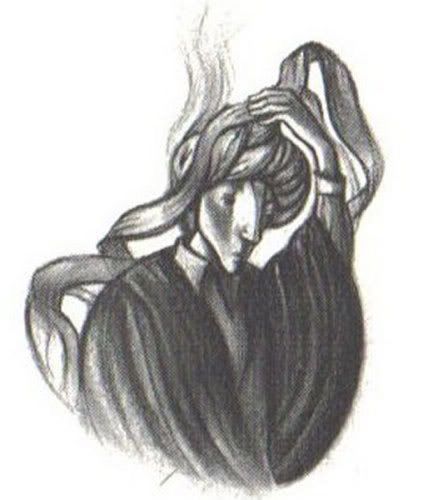
Finally, Harry alone reaches the final level of defense for the Philosopher's Stone. Note that there are Seven defenses altogether (Hagrid's Cerberus, Sprout's Devil's Snare, Flitwick's winged keys, McGonagall's chess game, Quirrell's troll, Snape's potions and Dumbledore's mirror). As you know it is Professor Quirrell who is trying to steal the Stone for Voldemort rather than Snape. Voldemort is living parasitically out the back of Quirrell's head. He had the fiend hidden beneath his turban the whole time and we've already covered how a Hat (or Turban) represents its wearer and the thoughts inside their head. What's even more interesting here is how Rowling has fashioned the image of Janus, the Two-Faced Roman god of entry and exit. As Hans Biedermann states, he is the god of gates and oversees the beginning of any undertaking, such as an initiation process. One of the primary attributes of Janus is the Key. Cirlot makes mention of Janus' association with destiny, time and war, and references his teacher, Marius Schneider, who held Janus to be identifiable with all symbols of inversion and mutual sacrifice. All of which seems to me highly appropriate for the shared destiny of Voldemort and Harry Potter.
Dumbledore's defense, the one Quirrell can't beat, is the Mirror of Erised. When Harry looks into the mirror with no personal desire for the Stone he feels it fall into his own pocket. Think about this. Harry Potter looks into a mirror to find the Philosopher's Stone. Quite simply, Harry Potter is the Philosopher's Stone. This is no different from stating that Harry Potter is the Sun. When Quirrell/Voldemort touches Harry they burn. They want the Stone but they are not capable of possessing it. It is my belief that the Philosopher's Stone is wholly symbolic in nature. But note how J.K. Rowling, understanding the alchemical symbolism likely better than I ever will, fashioned one that spins pure gold and has ensured her immortality.
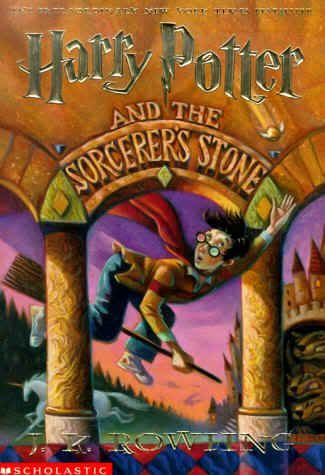

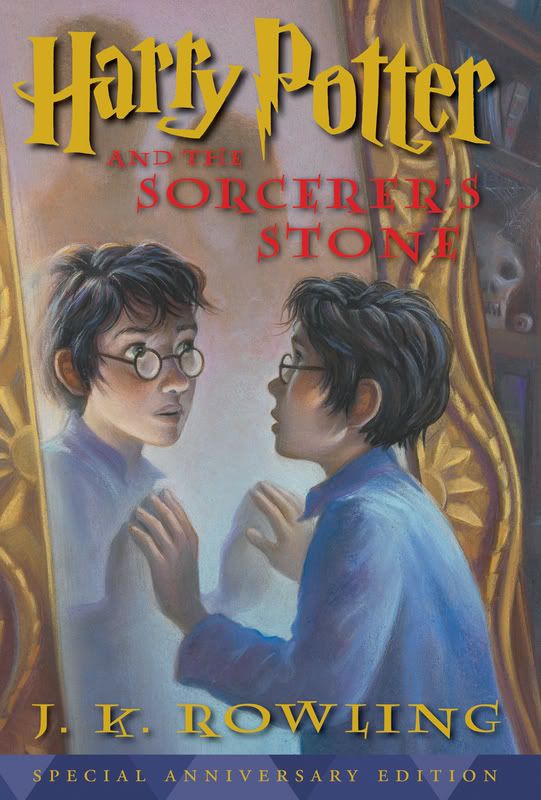
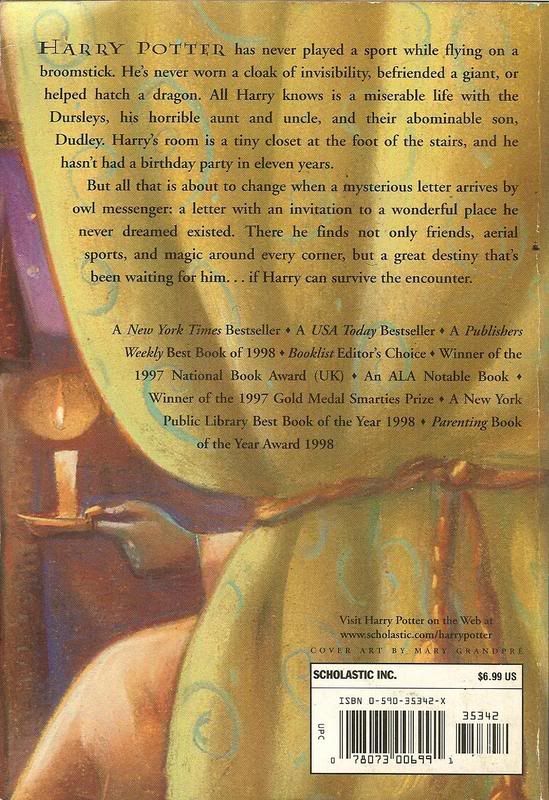
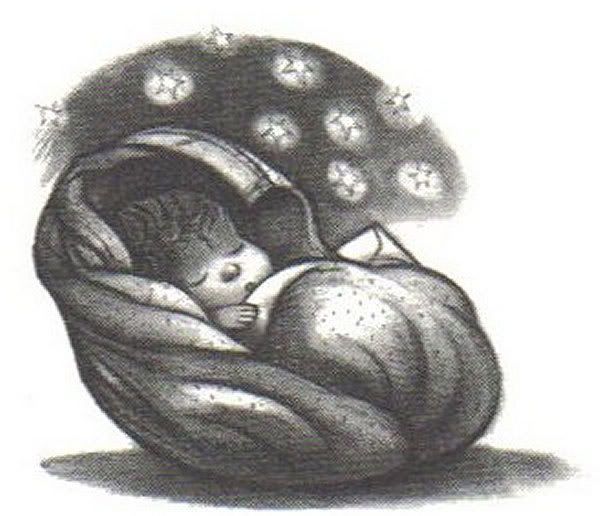

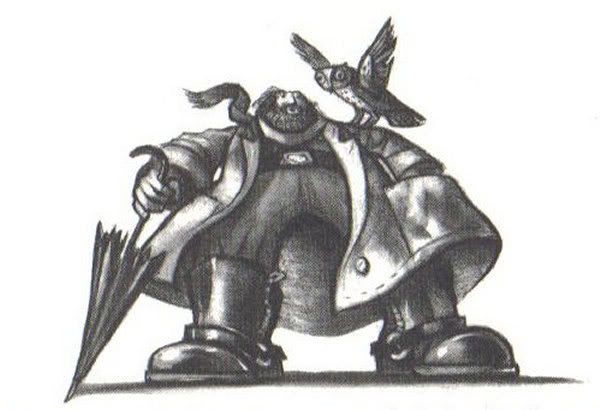

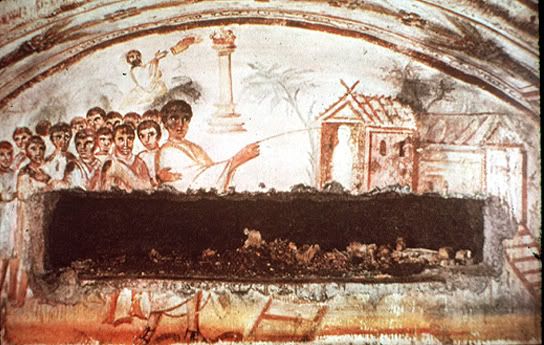

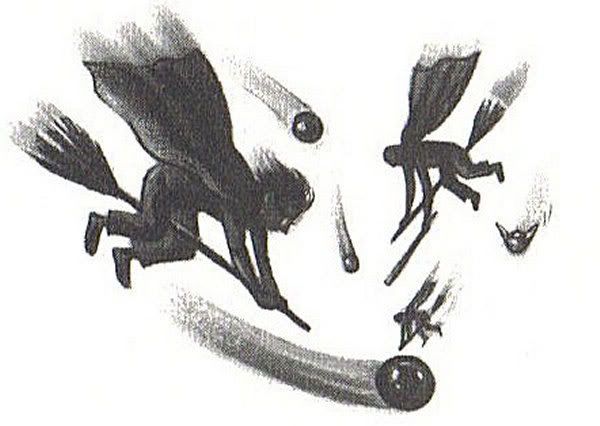
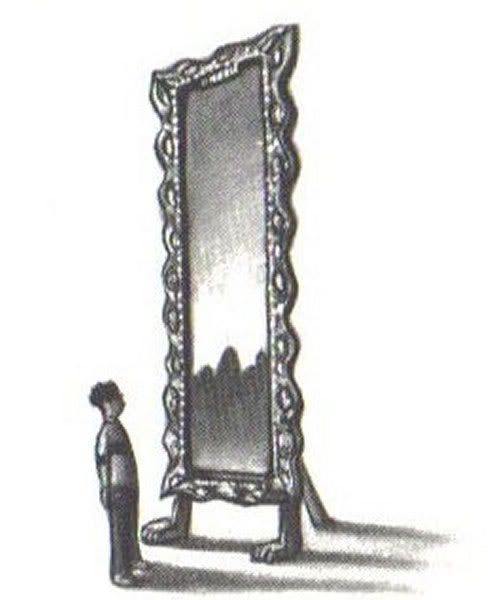
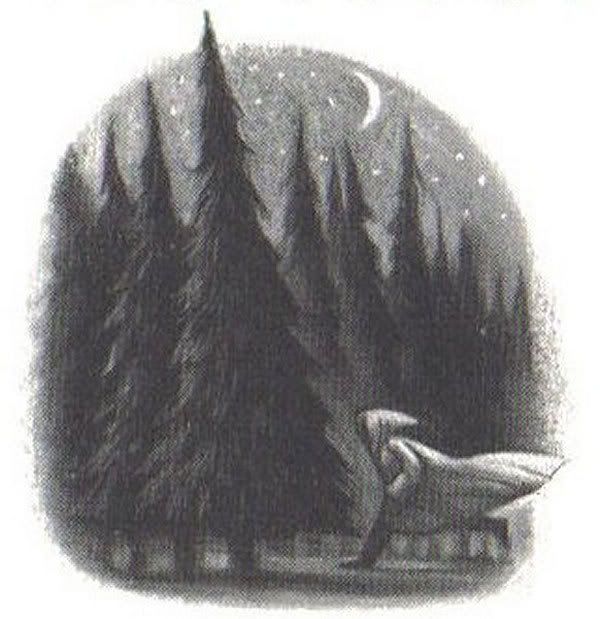
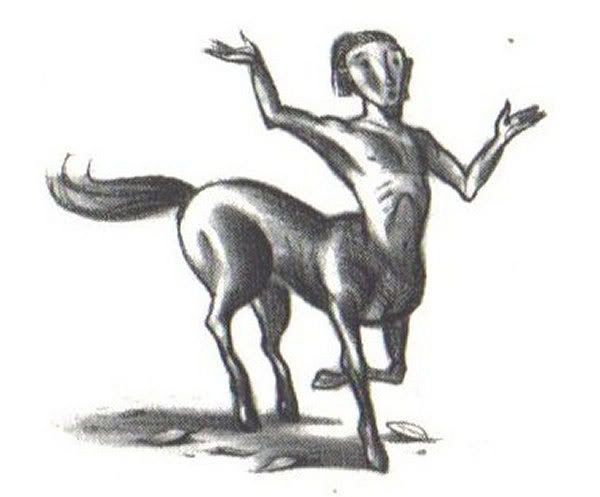
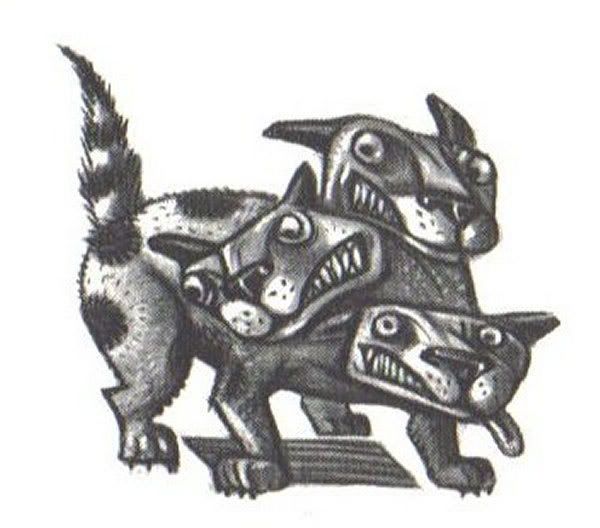
No comments:
Post a Comment